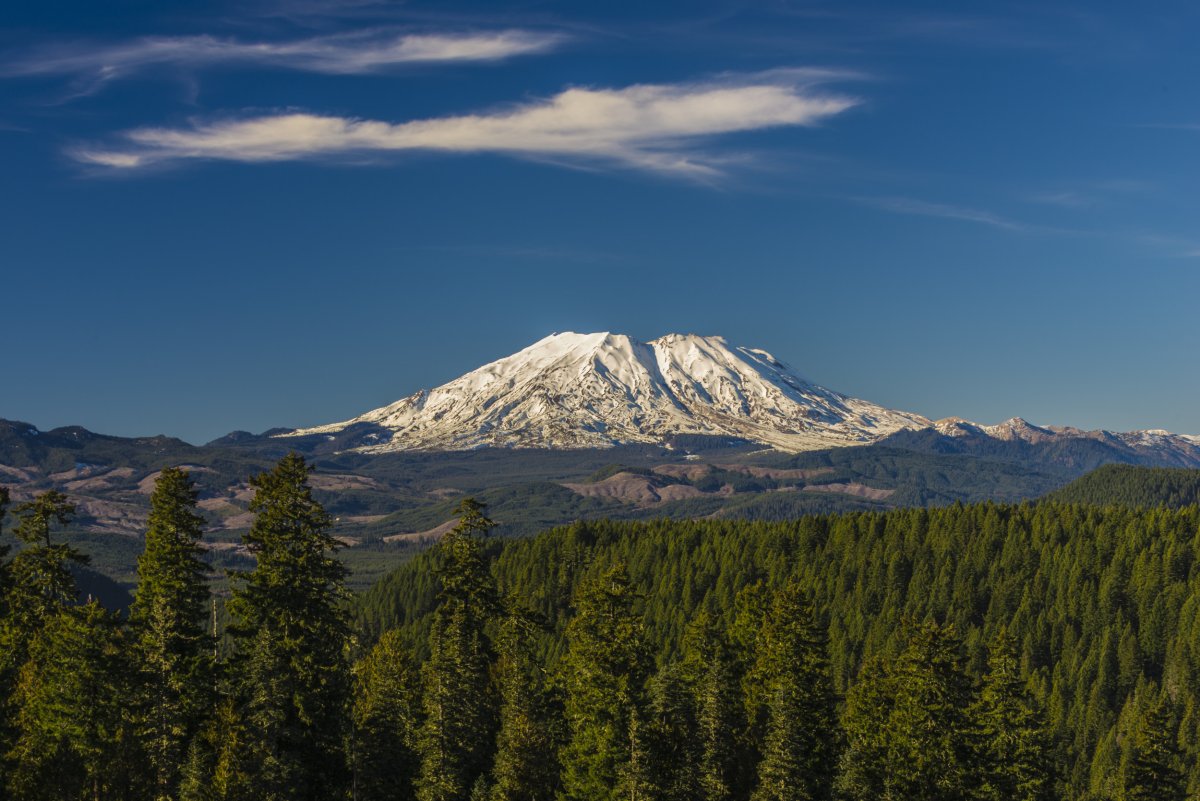One of the most dangerous volcanoes in the U.S. appears to be rumbling to life—but luckily, an eruption does not appear to be imminent.
Mount St Helens has seen an uptick in earthquakes since mid-July, the U.S. Geological Survey said in a recent update. So far, seismologists have recorded 400 earthquakes rumbling out under the mountain. This is the most activity the volcano has seen since it last erupted in 2008.
Although the uptick in activity is not concerning as of yet, seismologists are constantly monitoring St Helens for any changes.
"Mount St. Helens has had a slight uptick in earthquakes, have you noticed? Most are small (less than M1.0) & not felt at the surface. No cause for concern right now - no significant changes in ground deformation or gases. Volcano remains at normal (green) background levels," the USGS said in an update posted to X, formerly Twitter.
"Since mid-July 2023, over 400 EQs have been located by @PNSN1. Most recently, there have been about 30 located EQs per week. To compare, since 2008, on average about 11 earthquakes have been located per month at Mount St. Helens."
Since mid-July 2023, over 400 EQs have been located by @PNSN1. Most recently, there have been about 30 located EQs per week. To compare, since 2008, on average about 11 earthquakes have been located per month at Mount St. Helens.
— USGS Volcanoes🌋 (@USGSVolcanoes) October 30, 2023
The USGS said there are no signs of an "imminent eruption."
Mount St. Helens lies in Skamania County, Washington state. It is considered one of the most dangerous volcanoes in the United States, although it has not erupted since 2008.
The volcano's most notable eruption occurred on May 18, 1980, killing nearly 60 people and devastating 210 square miles of surrounding wilderness.
This eruption followed a period of increased activity at the volcano. On March 20 that year, a series of tremors shook the ground around its north flank. The earthquakes continued to escalate until a minor eruption occurred on March 27. However, the volcanic activity only continued to increase. Scientists detected a huge accumulation of magma below the mountain's surface and advised hundreds of people to evacuate.
The eruption on May 18 started with a magnitude 5 earthquake that shook the surrounding area. A gigantic landslide tumbled down the north side of the summit, followed by an explosion of volcanic gas.
Today, the volcano is still active and scientists expect it to erupt again. The surrounding area had an estimated population of 12,083 in 2019.
An uptick in earthquakes surrounding a volcano can precede an eruption, but not always. Eruptions are generally difficult to predict, but scientists know the tell-tale signs to watch out for. Other than eruptions, this includes steaming, and subtle swelling of the ground surface.

A short-term increase in earthquake activity at St Helens is fairly normal, the USGS said in an update.
"The current seismicity represents the largest short-term increase in earthquake rates since the last eruption ended in 2008," the USGS said. "However, longer duration sequences with more events occurred in 1988-1992, 1995-1996 and 1997-1999. None of the sequences in the 1980s and 90s directly led to eruptions."
Small magnitude earthquakes in the region are thought to be caused by the pressurization of its magma transport system.
The volcano is fed by magma which accumulates at its base, at depths of 16 miles. That magma then slowly elevates through the volcano and gathers in a reservoir.
"Recharge events can occur when magma enters this upper reservoir, increasing stresses that lead to earthquakes," the USGS said.
Do you have a tip on a science story that Newsweek should be covering? Do you have a question about Mount St Helens? Let us know via science@newsweek.com.
Uncommon Knowledge
Newsweek is committed to challenging conventional wisdom and finding connections in the search for common ground.
Newsweek is committed to challenging conventional wisdom and finding connections in the search for common ground.
About the writer
Robyn White is a Newsweek Nature Reporter based in London, UK. Her focus is reporting on wildlife, science and the ... Read more
To read how Newsweek uses AI as a newsroom tool, Click here.








